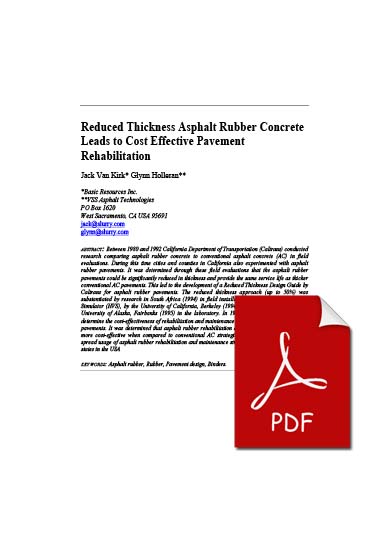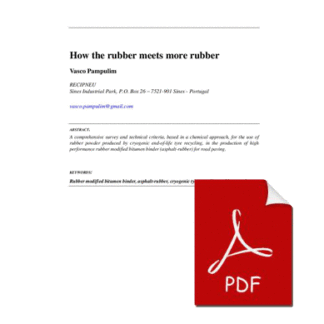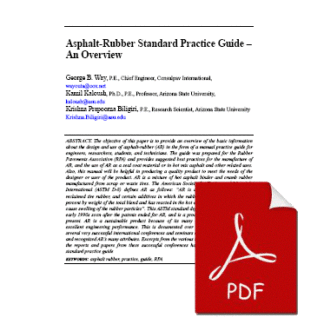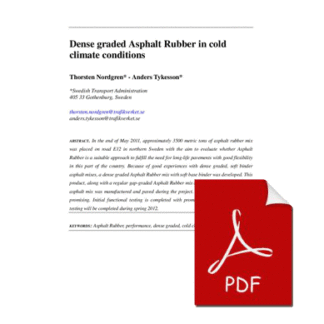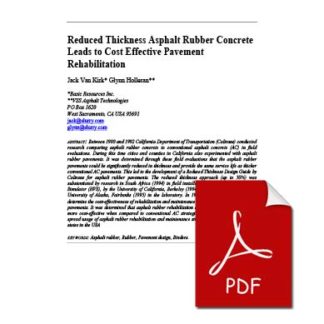Description
Between 1980 and 1992 California Department of Transportation (Caltrans) conducted research comparing asphalt rubber concrete to conventional asphalt concrete (AC) in field evaluations. During this time cities and counties in California also experimented with asphalt rubber pavements. It was determined through these field evaluations that the asphalt rubber pavements could be significantly reduced in thickness and provide the same service life as thicker conventional AC pavements. This led to the development of a Reduced Thickness Design Guide by Caltrans for asphalt rubber pavements. The reduced thickness approach (up to 50%) was substantiated by research in South Africa (1994) in field installations using the Heavy Vehicle Simulator (HVS), by the University of California, Berkeley (1994) in the laboratory and by the University of Alaska, Fairbanks (1995) in the laboratory. In 1999 research was conducted to determine the cost-effectiveness of rehabilitation and maintenance strategies using asphalt rubber pavements. It was determined that asphalt rubber rehabilitation and maintenance strategies are more cost-effective when compared to conventional AC strategies. This has led to more wide spread usage of asphalt rubber rehabilitation and maintenance strategies in California and other states in the USA.

